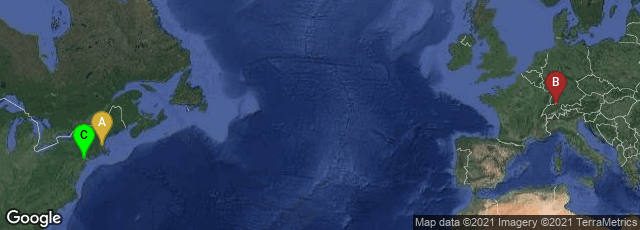
A: Cambridge, Massachusetts, United States, B: Kreis 1, Zürich, Zürich, Switzerland, C: New Providence, New Jersey, United States
In 2000 a research team from the Institute of Neuroinformatics ETHZ/UNI Zurich; Bell Laboratories, Murray Hill, NJ; and the Department of Brain and Cognitive Sciences & Department of Electrical Engineering and Computer Science at MIT created an electrical circuit of 16 "neurons" that could select and amplify input signals much like the cortex of the mammalian brain.
"Digital circuits such as the flip-flop use feedback to achieve multi-stability and nonlinearity tor estore signals to logical levels, for example 0 and 1. Analogue feedback circuits are generally designed to operate linearly, so that signals are over a range, and the response is unique. By contrast, the response of cortical circuits to sensory stimulation can be both multistable and graded. We propose that the neocortex combines digital selection of an active set of neurons with analogue response by dynamically varying the postive feedback inherent in its recurrent connections. Strong postive feedback causes differential instabilities that drive the selection of a set of active neurons under the constraints embedded in the synaptic weights. Once selected, the active neurons generate weaker, stable feedback that provides analogue amplication of the input. Here we present our model of cortical processing as an electronic circuit that emulates this hybrid operation, and so is able to perform computations that are similar to stimulus selection, gain modulation and spatiotemporal pattern generation in the neocortex" (Abstract)
R. Hahnloser, R. Sarpeshkar, M. Mahowald, R.J. Douglas and S. Seung: "Digital selection and analog amplification co-exist in an electronic circuit inspired by neocortex", Nature 405 (2000) 947-951.